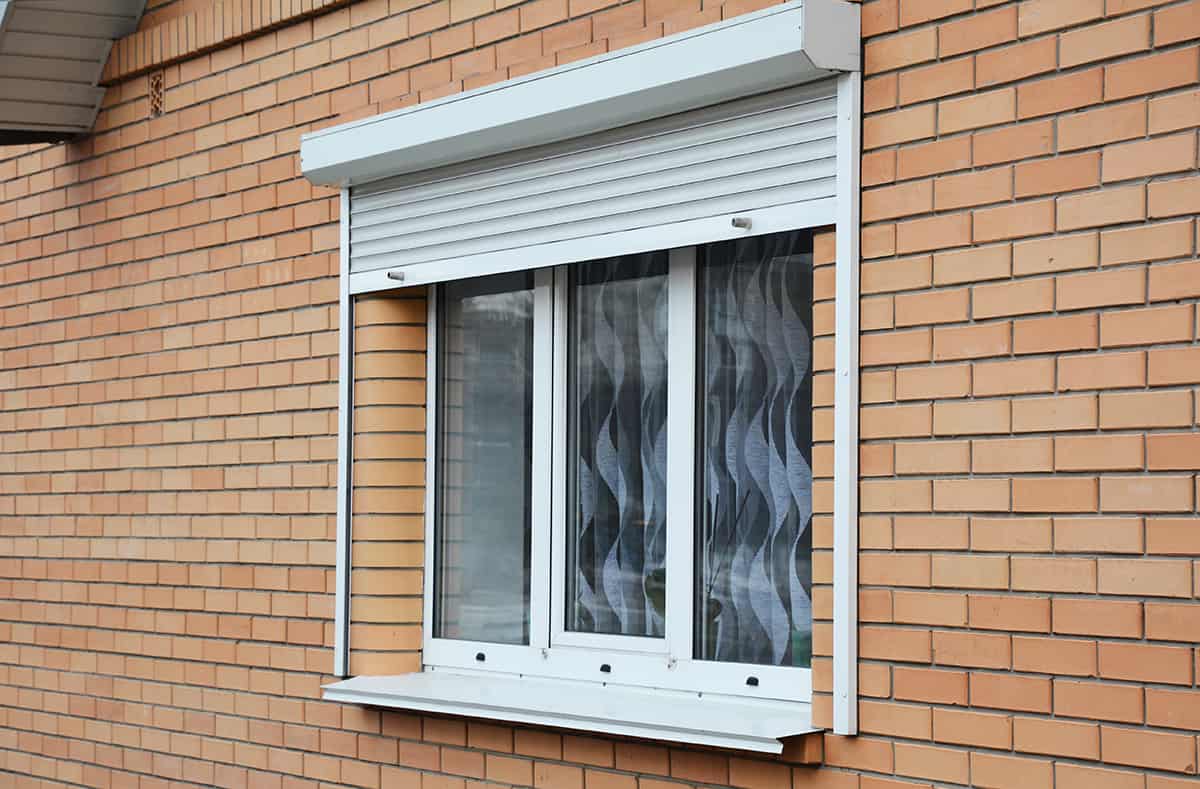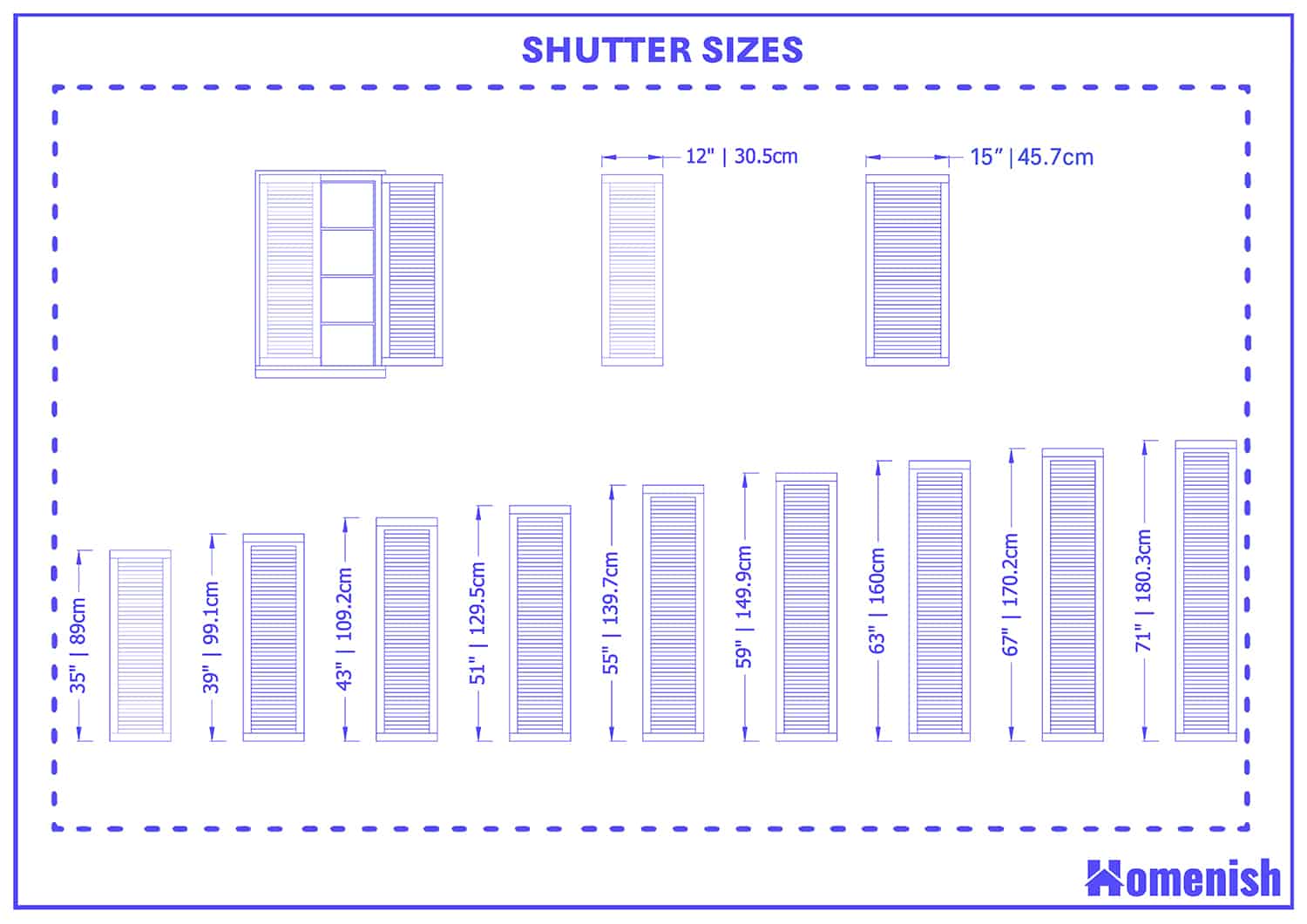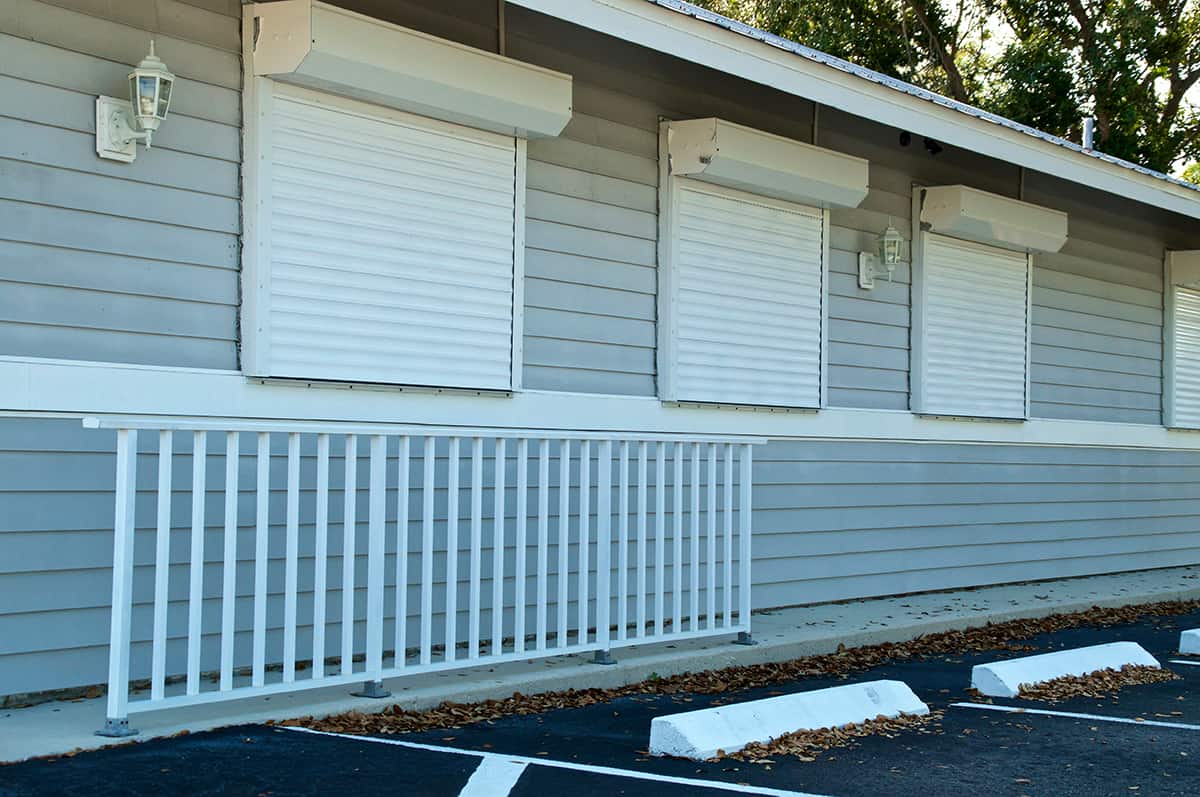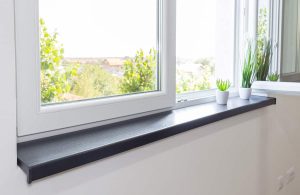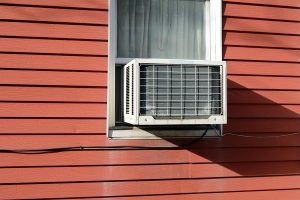External shutters can add a chic country cottage vibe to a home, adding personality to a property that might otherwise look bland or uninteresting.
External shutters are purely decorative; however, their size is important if you want them to look authentic and properly finished. Here we look at the common sizes for shutters and how to measure them for your own home.
Shutter Sizes
There is no single standard shutter size for exterior decorative shutters because there is no single standard window size. Shutters should have the same length measurement as the window they are fitted alongside, so if you have standard-sized windows, then you should be able to find standard-size shutters with relative ease.
There are a variety of common window sizes, and as such, there are a variety of matching common shutter lengths and widths.
Shutter length
The length of a shutter needs to be the same as the window it is installed next to. If your window has a length measurement of 39 inches, for example, then this is the length of shutter you should get. Standard exterior shutters are available in a wide range of sizes to suit varying window sizes.
In terms of length, which will be the height of the shutter from the base to the top, the most common sizes available are 35 inches, 39 inches, 43 inches, 51 inches, 55 inches, 59 inches, 63 inches, 67 inches, and 71 inches.
If you have windows that fall outside of these length measurements, you could opt for the closest available standard size or have your shutters custom-made to exactly fit the size of your windows.
Ideally, shutters will have the exact length measurement as the windows for the best look; however, if your window has a length measurement of 38 inches, then you could opt for the 39-inch shutter as this will only be half an inch over at either end. Avoid choosing shutters that are smaller, or more than an inch longer, as this will look like it has been installed incorrectly.
Shutter width
If your shutters were fully functional, then each shutter would need to be half the width of the window. This is so that when the shutters were in a closed position, they would meet in the middle and fully enclose the window to prevent any light from getting into the room.
However, with shutters that are purely decorative, the width measurement is not so important. Instead, focus on choosing a width that is practical for your home and creates the best aesthetic finish.
If you are installing shutters on all of the windows of your home, you’ll need to ensure there is enough space between each window for the shutters to be installed on the walls while leaving some blank wall space between the shutters. You do not want the shutter from one window meeting the shutter on the window next to it.
If you have enough wall space, you can go for full-size shutters that measure half the width of the window, but a more popular option is to choose shutters where each shutter measures a third of the width of the window. While there is no set standard shutter width size, the common sizes that are typically available are widths of 12 inches and 15 inches.
If you want shutters with a different width measurement, then chances are that you will have to have custom shutters made. To figure out that width measurement is going to be best for your shutters, measure the width of your window and then, divide this by three, then choose the nearest available shutter to this number.
For example, if your window measures 42 inches in width, then after dividing this by 3, you will have 14.
In this instance, you should choose shutters that measure 15 inches in width, as this is a standard size that is close enough to your resulting number.
Alternatively, you could divide the width of your window by 2; in this instance, 42 inches divided by 2 would give you 21. Since standard shutters do not come in width measurements of 21 inches, you could have these custom-made if you want a more authentic look where the shutters are big enough to appear as though they would meet in the middle at a closed position.
Shutter considerations
Clearance
When measuring your window for shutters, you need to remember that measuring your window frames alone is not enough. The shutters are going to be fixed on the exterior wall of your home, so you need to ensure there is enough clearance for this.
If you have plant pots attached to your wall or other decorative items, then these may need to be removed so that there is enough space for the shutters.
If there are more permanent fixtures on the exterior of your home, such as pipework, then you will have to plan your shutters around these. In some instances, this may mean options for shutters that are smaller in width than you might like.
Measuring
Always measure your windows from the outside of your home if you can. The interior measurements may differ slightly from the exterior measurements, so if you want an accurate figure on that to base your shutter order on, then you may have to get a ladder out to measure your upper floor windows.
You should also take care to measure every window, even if two windows next to each other appear to be the same size.
Mockup
If you are struggling to decide what size of shutters to get or whether shutters will suit the look of your home, cut out pieces of cardboard of the same size as the available shutters, and have a friend or neighbor hold them up next to your windows while you step back and take a look. This can be really useful, especially when you are struggling to decide between two different widths of shutters.
